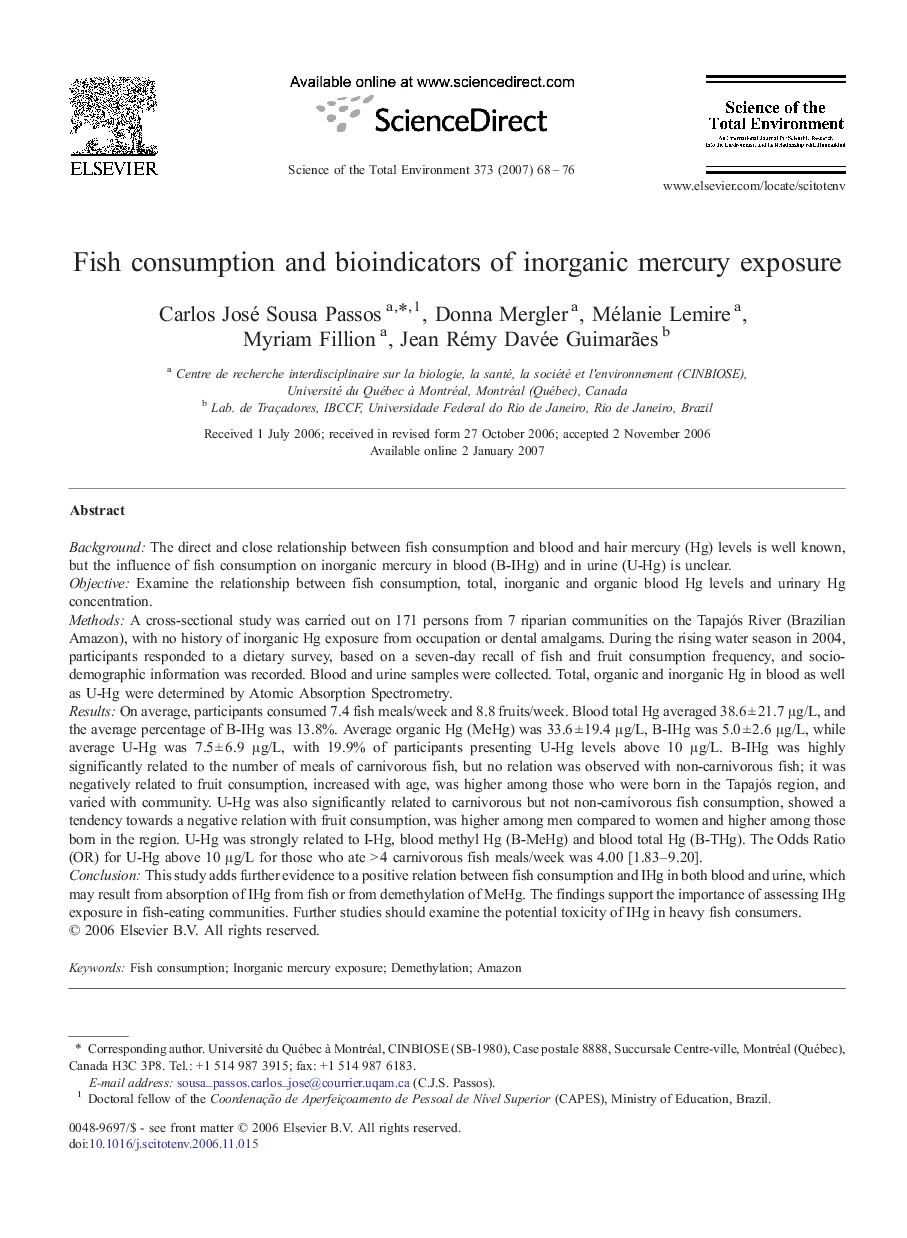| کد مقاله | کد نشریه | سال انتشار | مقاله انگلیسی | نسخه تمام متن |
|---|---|---|---|---|
| 4433514 | 1619960 | 2007 | 9 صفحه PDF | دانلود رایگان |

BackgroundThe direct and close relationship between fish consumption and blood and hair mercury (Hg) levels is well known, but the influence of fish consumption on inorganic mercury in blood (B-IHg) and in urine (U-Hg) is unclear.ObjectiveExamine the relationship between fish consumption, total, inorganic and organic blood Hg levels and urinary Hg concentration.MethodsA cross-sectional study was carried out on 171 persons from 7 riparian communities on the Tapajós River (Brazilian Amazon), with no history of inorganic Hg exposure from occupation or dental amalgams. During the rising water season in 2004, participants responded to a dietary survey, based on a seven-day recall of fish and fruit consumption frequency, and socio-demographic information was recorded. Blood and urine samples were collected. Total, organic and inorganic Hg in blood as well as U-Hg were determined by Atomic Absorption Spectrometry.ResultsOn average, participants consumed 7.4 fish meals/week and 8.8 fruits/week. Blood total Hg averaged 38.6 ± 21.7 μg/L, and the average percentage of B-IHg was 13.8%. Average organic Hg (MeHg) was 33.6 ± 19.4 μg/L, B-IHg was 5.0 ± 2.6 μg/L, while average U-Hg was 7.5 ± 6.9 μg/L, with 19.9% of participants presenting U-Hg levels above 10 μg/L. B-IHg was highly significantly related to the number of meals of carnivorous fish, but no relation was observed with non-carnivorous fish; it was negatively related to fruit consumption, increased with age, was higher among those who were born in the Tapajós region, and varied with community. U-Hg was also significantly related to carnivorous but not non-carnivorous fish consumption, showed a tendency towards a negative relation with fruit consumption, was higher among men compared to women and higher among those born in the region. U-Hg was strongly related to I-Hg, blood methyl Hg (B-MeHg) and blood total Hg (B-THg). The Odds Ratio (OR) for U-Hg above 10 μg/L for those who ate > 4 carnivorous fish meals/week was 4.00 [1.83–9.20].ConclusionThis study adds further evidence to a positive relation between fish consumption and IHg in both blood and urine, which may result from absorption of IHg from fish or from demethylation of MeHg. The findings support the importance of assessing IHg exposure in fish-eating communities. Further studies should examine the potential toxicity of IHg in heavy fish consumers.
Journal: Science of The Total Environment - Volume 373, Issue 1, 1 February 2007, Pages 68–76